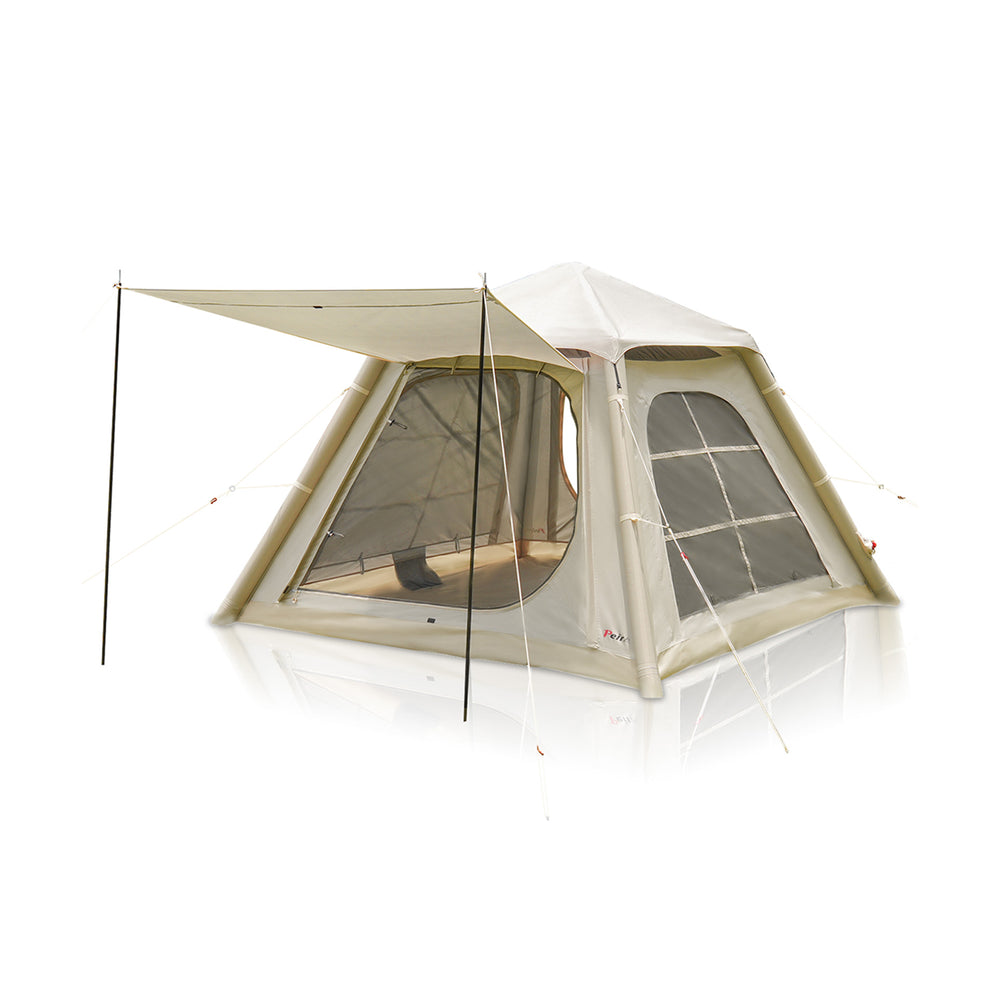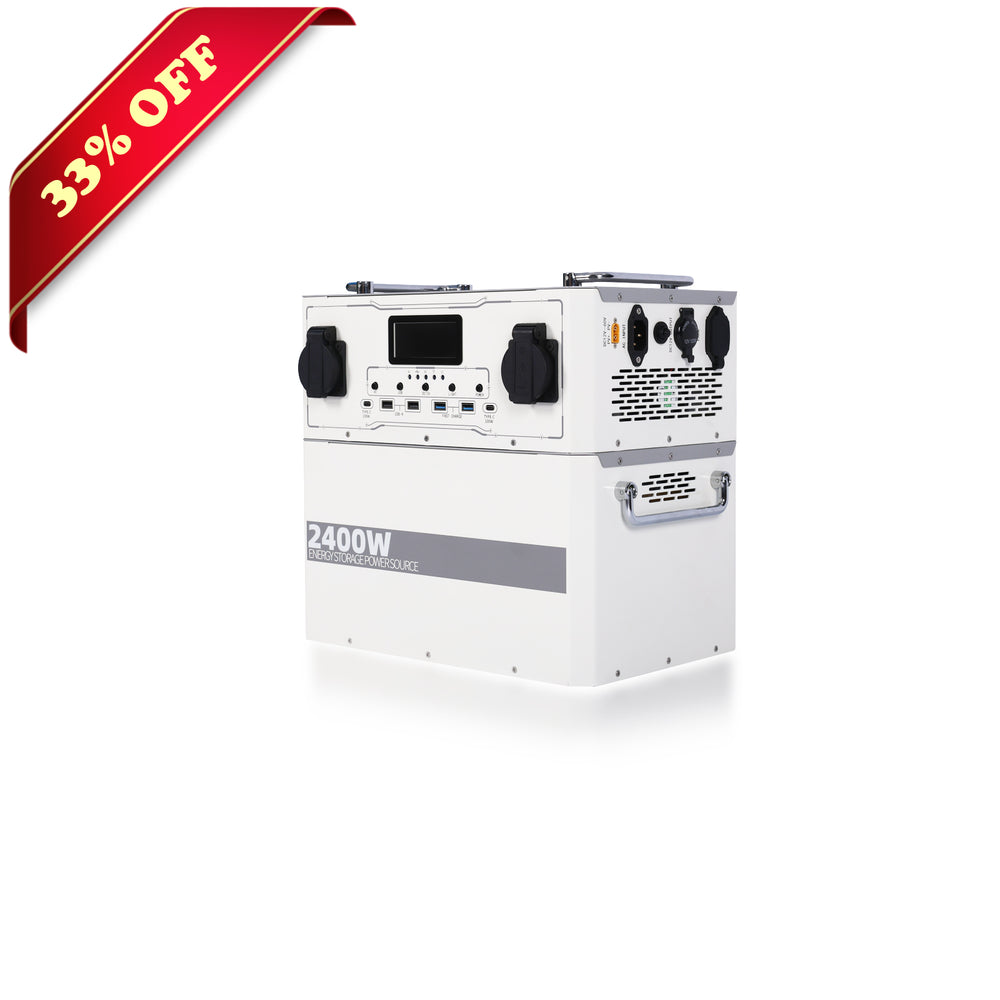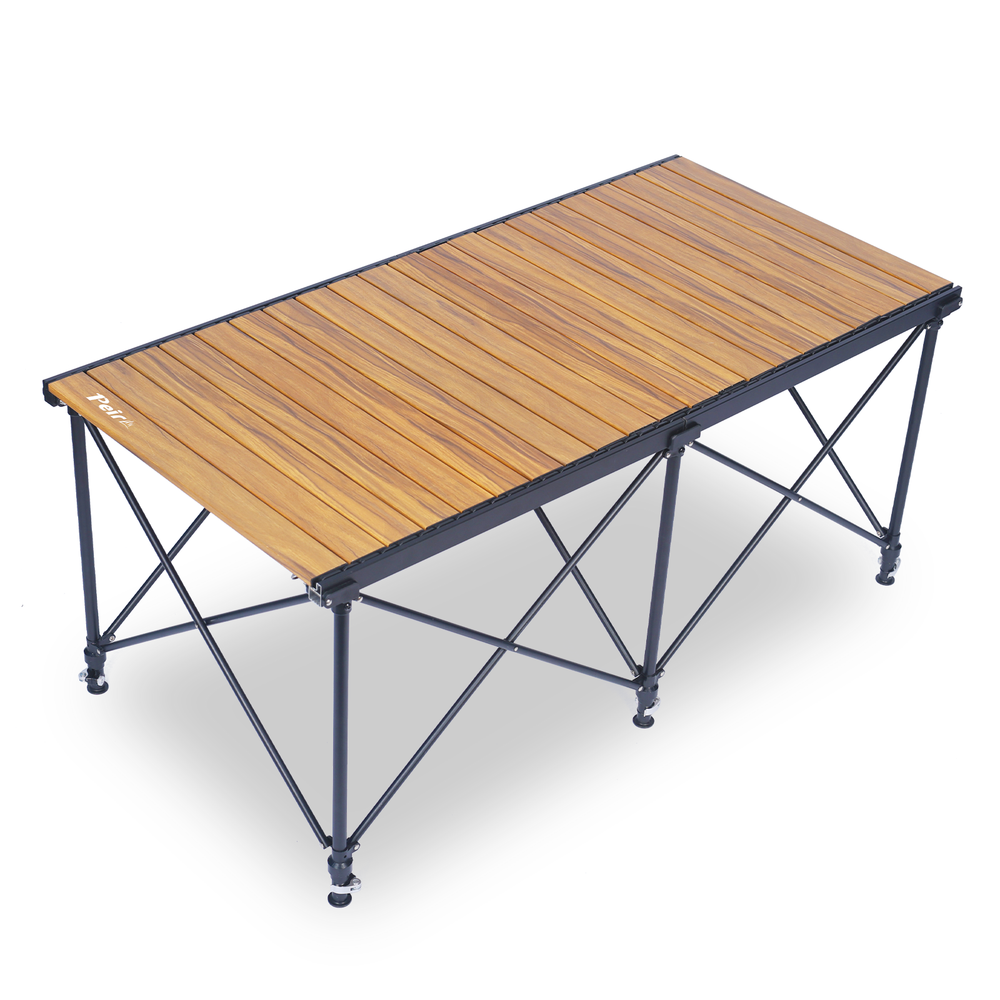If you plan to use your tent for a long time, clean it as frequently as possible to keep it fresh for the next trip. Outdoor use can lead to staining, mould, and dirt on the fabric and may compromise its quality. Fortunately, most tents are easy to maintain and will last many years if used properly.
Let's discuss some important factors to consider while cleaning your Inflatable tent. We will also discuss essential maintenance, cleaning, and washing tips to keep your tent as good as new.
Why Cleaning Your Tent is Important
Regular cleaning can:
Extend the tent’s lifespan by preserving its material.
- Maintain waterproofing by preventing dirt and oil from breaking down the tent’s water-resistant layers.
- Prevent foul odours by removing mould, mildew, and other organic residues.
- Make packing and storing easier by keeping it free from dirt and sticky residues.
How Often Should You Clean Your Tent?
For frequent campers, it's advisable to wash your tent maybe once or twice per season or at least every season. However, if done as a spot cleaning after each trip, it would make a huge difference. If the tent was used with elements such as mud, sand, rain, or in a humid area, the tent needs to be cleaned more often.
There is no fixed cleaning frequency for any tent. You can adapt according to your routine, tent usage, fabric, and, more importantly, environmental conditions. Most manufacturers also provide cleaning guidelines for tents, so stick to them for the best results.
What You'll Need to Clean Your Tent
Here are a few supplies to help make the process easy and effective:
- Mild soap or tent-specific cleaner (avoid harsh detergents or bleach)
- A soft sponge or cloth
- Bucket or large tub
- Soft-bristled brush (optional for stubborn stains)
- Waterproofing spray (for post-cleaning if waterproofing is needed)
Step-By-Step Guide: How to Clean Your Tent
Step 1: Prepare for Cleaning
Before you start, gather your materials and choose an area to set up the tent, like a backyard or a spacious room with plenty of ventilation. If the tent has separate components, clean each part individually.
- Shake off dirt: Start by shaking your tent outside to remove all the loose stuff, such as dirt, leaves, and sand.
- Inspect for damage: Inspect the tent and specifically look for tears, holes, or damaged zippers. Minor damages can be fixed at a later date but should be noted at the moment.
Step 2: Spot Cleaning Dirt and Stains
You can do a quick spot clean for minor dirt, dust, or isolated stains.
- Use mild soap: Use a bucket to add a few drops of gentle soap or a tent cleaner to warm water.
- Dampen a sponge: Use a soft, damp sponge to clean the affected parts of the tent. Do not use extra water while washing because some of the tent’s materials are water-absorbent and may take longer to dry.
- Focus on stubborn spots: For stubborn stains, you may need to use a brush with soft bristles. Use a gentle brush to avoid damaging the waterproof layer.
Step 3: Deep Clean the Entire Tent
If your tent requires thorough washing, follow these instructions strictly so the coating is not compromised.
Submerge and Soak
- Fill a tub or basin: Use a large basin or a bathtub and pour water into it. Take a small amount of mild washing soap or a cleaner recommended for use on tents.
- Soak the tent: Put the tent and rainfly in the water and then move them around so the soap penetrates the fabric.
- Let it sit: Soak the tent for 10-20 minutes. Do not use hot water, which can remove the tent’s outer coatings.
Gently Scrub
- Use a soft sponge: After washing, scrub the tent gently using a sponge. Use the sponge on most dirty parts of the tent.
- Rinse thoroughly: Rinse with plain water and fill the tub again with fresh, clean water. Wash the tent with water many times until no soapy residue is left on it. Any remaining soap on the tent will attract dirt and, therefore, make it dirtier faster.
Step 4: Removing Odors from Your Tent
Sometimes, a tent may develop nasty smells due to poor storage or constant contact with damp conditions. Here’s how to remove these smells:
- Use a vinegar solution: Dilute a one-to-four (1:4) ratio of white vinegar to water and then lightly spray in the tent’s interior. This can be used to neutralize any odour and formation of mould.
- Rinse well: After using vinegar, always wash the tent very well, as vinegar also has a smell.
- Allow it to air out: Drying the tent after washing is essential. Place the tent in good ventilation to dry before storing it again.
Step 5: Drying Your Tent
The tent must be dried as soon as possible to prevent mould and mildew development.
- Set it up outdoors: Place it in front of sunlight or any shaded area. Preferably, let it dry on a sunny day to reduce the drying duration.
- Open all zippers: Ensure all doors, windows, and necessary vents are opened so that air can freely move.
- Dry completely: Before folding, make sure all areas of the tent—particularly seams and corners — are thoroughly free of moisture. It only takes a little moisture to create mould.
Additional Tips For Tent Maintenance
Storing Your Tent Properly
- Keep it loose: Do not fold your tent in a small, compressed space, especially during the dry season. Try to use a more significant storage bag or hang it up.
- Store in a cool, dry place: Do not place the tent in a hot attic or a damp basement. Tent storage also requires a cool, dry closet.
- Avoid prolonged UV exposure: Direct light exposure also threatens your tent fabric; therefore, it should not be left outside when not in use.
Re-waterproofing Your Tent
Tents also become waterproof with time. Always check for water resistance; if the fabric absorbs the water and does not stay in droplets, apply the waterproof layer again.
- Choose a tent-safe waterproof spray. These are easy to find and specially designed for tent fabric use.
- Apply evenly: Spray your tent using a spray, first on areas of higher visibility, such as the rainfly, and then on the bottom portion of your tent.
- Let it dry thoroughly: Before packing the tent, you should wait until the waterproofing solution dries.
Troubleshooting Common Tent Issues
Removing Mold And Mildew
If mould or mildew has formed, follow these steps carefully:
- Use a specialized cleaner: Cleaners are designed to eliminate mould in outdoor tents. Please do not use bleach, as it will harm the fabric.
- Gently scrub: It is advisable to use a sponge or a soft brush with the cleaner while washing the affected area of the tent.
- Thoroughly rinse and dry: Wash the cleaner properly with water and let it dry in the sun to remove dirt and other debris.
Handling Sticky Residue
Sometimes, tents can develop sticky residue, usually due to the breakdown in coatings.
- Rinse with warm, soapy water: Occasionally, warm and gentle soap can wash away the residue.
- Consider a repair kit: In extreme situations, you may have to remove and reseal the affected area using a tent repair kit.
Fixing Zippers And Small Tears
- Zippers: If the zipper is clogged and difficult to pull, use zipper lubricants. If it is torn, use a zipper repair kit or drop it off for repair at the nearest tent repair service.
- Small tears: stitch small holes with a tent repair kit or drop the tent at a gear repair store.
The Do's and Don’ts of Tent Cleaning
Do's
- Do spot cleaning often: Cleaning those spots occasionally will help you avoid more frequent deep cleaning sessions.
- Do air dry completely: When storing your tent, ensure it is dry.
- Store in a cool, dry place. Pack your tent tightly to preserve its shape and maintain its condition.
Don'ts
- Don’t use harsh cleaners: Avoid bleach, strong detergents, or fabric softeners.
- Don’t wash in the machine: Washing machines can be too aggressive to your tent.
- Don’t store a damp tent: Even a little moisture can cause mildew.
Final Thoughts
Proper washing and storage ensure that your tent remains fresh, dry, and ready ]for the next trip. It would help if you learned how to clean and dry your tent correctly to enjoy its comfort and protection for many years.












 Peirhw Inflatable House Tent - Starry Night Love
Peirhw Inflatable House Tent - Starry Night Love
 Peirhw Glamping Tents - Friendship Castle
Peirhw Glamping Tents - Friendship Castle
 Peirhw Inflatable Canopy Tent - Adventurer
Peirhw Inflatable Canopy Tent - Adventurer



 Peirhw Portable Air Conditioner
Peirhw Portable Air Conditioner
 【Advance Sale】Peirhw Portable Power Station 2400W
【Advance Sale】Peirhw Portable Power Station 2400W
 【Advance Sale】Peirhw Portable Power Station 600W
【Advance Sale】Peirhw Portable Power Station 600W





 Peirhw Self Inflating Sleeping Pad
Peirhw Self Inflating Sleeping Pad
 Peirhw Air Mattress (8" Queen Type)
Peirhw Air Mattress (8" Queen Type)
 Peirhw Camping Sleeping Bag
Peirhw Camping Sleeping Bag


 Peirhw Butterfly-shaped Canopy for Camping
Peirhw Butterfly-shaped Canopy for Camping
 Peirhw Camping Waterproof Canopy (Cannot be Purchased Separately)
Peirhw Camping Waterproof Canopy (Cannot be Purchased Separately)


 Peirhw Outdoor Folding Chairs
Peirhw Outdoor Folding Chairs
 Peirhw Folding Camping Table
Peirhw Folding Camping Table












